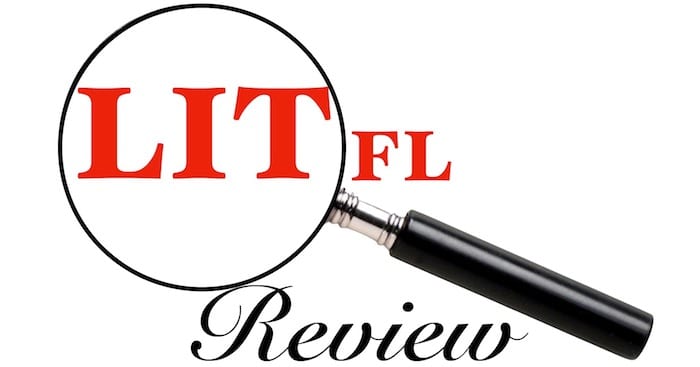LITFL Review 152
Welcome to the 152nd LITFL Review! Your regular and reliable source for the highest highlights, sneakiest sneak peeks and loudest shout-outs from the webbed world of emergency medicine and critical care. Each week the LITFL team casts the spotlight on the blogosphere’s best and brightest, and deliver a bite-sized chunk of Global FOAM.
The Most Fair Dinkum Ripper Beauts of the Week
A real Ripper from SMACC Gold – Casey Parker reminds us what makes us human. Our ability to feel and empathise is more important than ever. Learn more in his talk “Hard Lessons Learned”. [SO]
If you have just a few seconds to spare, read this touching post from Katrin Huska. It may be time you had that talk with your patient, too. [SO]
One of the most famous airway tragedies in recent history – the Elaine Bromiley case – receives a real-time reconstruction courtesy of Nicholas Chrimes. Harrowing and essential – anyone involved in airway management should watch this. [SO]
The second in the trilogy of trials reassessing Early Goal-Directed Therapy – the ARISE trial – has been released to great fanfare. Hear the original presentation here and Scott Weingart’s awesome summary here. Emergency Medicine Literature of Note also posted their commentary here, The Bottom Line has a great review as well, and the Intensive Care Network has interviewed one of the lead investigators here. [SO,MG, AS]
The Best of #FOAMed Emergency Medicine
- We won’t be fooled again! Ken Milne and Ryan Radecki review the questionable veracity of the conclusions of the Cochrane Collaboration systematic review of thrombolysis in acute ischemic stroke. [AS]
- Looking to improve your skills as a trauma provider? The Anaesthesia Trauma and Critical Care (ATACC) Course, hosted multiple times a year in the UK, is widely lauded as one of the best courses available for up-to-date trauma practice. The ENTIRE course manual is available entirely FREE- via PDF and iTunes, and will be updated regularly.Just let that sink in. A free, up-to-date (and constantly updated), and concise trauma manual.(Thanks to Tim Leeuwenburg for the tip) [SO]
- Didn’t make the UK’s College of Emergency Medicine Conference this week? Check out this fantastic resource of short summaries of the key points from the lead lecturers. CEM going FOAMed! With a huge range of topics including from traumatic arrest, sedation, gestalt and much much more. [SL]
- The September edition of the Annals of Emergency Medicine Audio Summary, hosted by Drs David Newman and Ashley Shreves has been released. [MG]
- Which c-spine rule is better: NEXUS or Canadian C-spine rule? BoringEM reviews the literature, and helps us understand their best uses. [MG]
- Do you understand axis as well as you’d like? The EMS 12-Lead blog gives us the first in a new series on understanding axis on the ECG. [MG]
- Damian Roland writes a touching post on a recent campaign to help reduce the incidence of suicide and improve general wellbeing by connecting with others. The 17th part of his “What I learnt this week” series, on #connectingwith, is here. [SO]
- Pre hospital Intubation and Failure to recognise (o)esophageal intubation. An ED nurse and Mother blogs about her the death of her daughter and the scholarship fund set up in her memory. [CC]
- We all would like a smart doctor but I think most of us would agree that toughness, resilience and “grit” are vital characteristics. John Greenwood discusses the concept of “grit” and why we should identify and foster it. [AS]
- Not only is half of what we learn in medical school wrong, but more than half of research is wrong as well. Ryan Radecki implores that we open the data up for external analysis and verification. [AS]
- A wonderful reminder from Amal Mattu that flipped T-waves in the inferior and anteriorseptal leads is a PE until proven otherwise. Don’t be mislead into the ischemia pathway! [AS]
- Takotsubo cardiomyopathy can be one of the most difficult STEMI mimics to differentiate. Learn how this week from Dr Steve Smith. [MG]
- The AHA/ACC guidelines on the management of NSTEMI are out and Ryan Radecki highlights some important, and long awaited, changes including addition of the HEART score, dropping of CK-MB and Myoglobin, a place for single troponins and shared decision making. [AS]
- In the latest edition of the MEdIC series, the ALiEM team discusses the use of and role for black humour and slang terminology. This post is a great example of crowdsourcing with over 120 comments and has wonderful expert peer review. [AS]
The Best of #FOAMcc Critical Care
- Really wide QRS > 200 msec? Amal Mattu reminds us to think more about toxic effects of medications and metabolic issues like hyperkalemia and treat with Calcium and Bicarbonate. [AS]
- Rory Spiegel offers a passionate argument for the use of Midline catheters for deep peripheral veins instead of traditional intravenous catheters. Time to adapt our “ideology, methods and tools accordingly.” [AS]
- The Neuro ICM and EM blog have a wonderful summary on a recent consensus statement on MultiModality Monitoring in Neurocritical Care. [SO]
- The absence of intracranial hemorrhage in a head trauma patient does not mean critical care management is unnecessary. St. Emlyn’s discusses the critical care management of patients with diffuse axonal injury this week on their podcast. [SL, AS]
- We’ve all been wondering about Rob Mac Sweeney. Full time consultant in Intensive Care and anaesthesia, producer of some of the best #FOAMcc with the Critical Care Reviews newsletter, editor of a new open access critical care journal– how does he do it all? ALiEM’s “How I work Smarter” series has the answer. [SO]
- UMEM have a great critical care pearl on Goal-directed resuscitation during Cardiac arrest using CPP, DBP, and ETCO2. [SO]
- Tachydysrhythmia diagnosis and management is bread and butter EM. John Greenwood reviews pearls and pitfalls from Amal Mattu on the University of Maryland Emergency Medicine site. This simple approach makes management straightforward. [AS]
- PulmCrit features some dogmalysis, explaining that Lactated Ringers is not only safe, but superior to normal saline in the setting of hyperkalaemia. [MG]
- “Panscanning” has become a common practice for evaluation of trauma patients without any evidence of benefit. ALiEM gives a great critique of this practice. A must read for anyone caring for trauma patients. [AS]
- Emergency Physicians MUST be the expert in EKGs. Steve Smith recounts a case to remind us that not all cardiologists are up to date on the literature. [MG]
The Best of #FOAMtox Toxicology
- Is cobalt toxicity from an artificial hip real, or just the stuff of House? The Poison Review features an important article that tells us it is. [MG]
- Which diabetes medications are high risk for causing hypoglycemic episodes? Bryan Hayes reviews the drug classes on ALiEM and includes a handy table for clinical reference. [AS]
The Best of #FOAMus Ultrasound
- Ultrasound continues to challenge CT scan for radiographic diagnostic supremacy. ALiEM shares a great post reviewing the utility of ultrasound in the diagnosis of small bowel obstruction. [AS]
- Academic Life in Emergency Medicine release two new Paucis Verbis cards this week for focused abdominal aortic ultrasound, and FAST exam. [MG]
- Ultrasound of The Week has a superb case of an 87 year old male with collapse. Brilliant images? [SO]
- Have you been following the Intensive Care Network’s Lung Ultrasound Case series? Why not? Please check it out now- Case 5 is now up. [SO]
- Matt and Mike from the Ultrasound Podcast discuss the recent paper on point-of-care ultrasound in patients with respiratory symptoms- with Vicki Noble, Andrew Liteplo, and the first author Christian Laursen in a great two-part journal club. Part 1 Part 2 [SO]
- The recent NEJM article on CT vs. Ultrasound in renal colic has gotten a lot of press on FOAM. St. Emlyn’s weighs in as well with a critical review of the article.
The Best of #FOAMped Pediatrics
- What is the relevance of mildly subnormal oxygen levels in bronchiolitis? Don’t Forget the Bubbles discusses this question in The Effects of Oximetry on Hospital Admission in Bronchiolitis. [AS]
- SonoKids discusses the benefits of a bedside ultrasound in a 9 year old trauma patient with flank pain – Not so FAST? [TRD]
- Never mind faffing around trying to get IV access while your paediatric patient writhes in agony – Pediatric EM Morsels sells us the benefits of using intranasal fentanyl. [TRD]
- Brilliant discussion of strep pharyngitis from Casey Parker asking tough questions about who should be tested (almost no one) and who should be treated (surprise – it’s not what you think). [AS]
LITFL Weekly Review Team
LITFL RV brought to you by:
- Anand Swaminathan [AS] (EM:RAP, Core EM,REBEL EM and The Teaching Institute)
- Andrew J. Bowman [AJB]
- Bruno Tomazini [BT] (ICURevisited)
- Chris Connolly [CC] (RCEMFOAMed, FOAMShED)
- Chris Nickson [CN] (RAGE, INTENSIVE and SMACC)
- Cian McDermott [CMD] (POCUS Geelong, SMACC)
- Craig Wylie [CW] (BadEM)
- Jeffrey Shih [JSh](ALiEM)
- Luke Phillips [LP] (POCUS Geelong)
- Manpreet ‘Manny’ Singh [MMS] (emDOCs.net)
- Marjorie Lazoff [ML] (TandemHealth)
- Mat Goebel [MG]
- Matt Siuba [MS]
- Philippe Rola [PR] (Thinkingcriticalcare)
- Rick Pescatore [RP] (EM News UC:RAP)
- Sarah Newman [SN]
- Salim Rezaie [SR] (REBEL EM, The Teaching Institute)
- Segun Olusanya [SO] (JICSCast, The Bottom Line)
- Thomas C. Neal [TCN] (PulmCCM)
Reference Sources and Reading List

LITFL Review
#FOAMed Updates
New Jersey Emergency Physician with academic focus on resident education and critical care in the ED. Strong supporter of FOAMed and its role in cutting down knowledge translation | @EMSwami |


